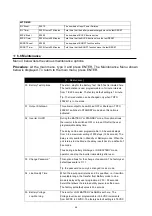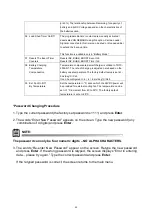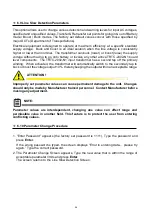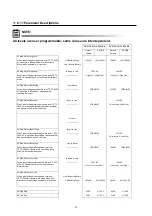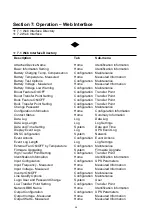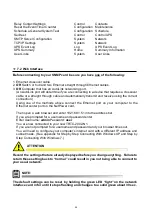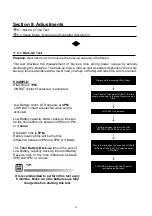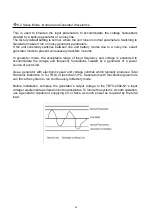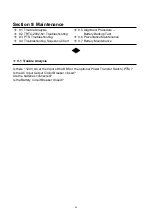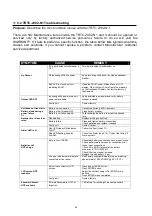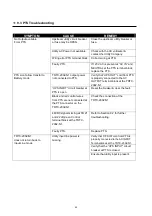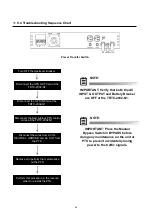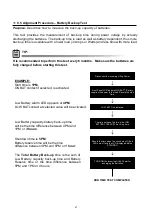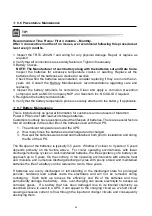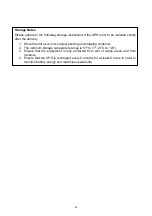
9.6 Preventative Maintenance
Recommended Time Frame: First 3 months
– Monthly.
After 3 consecutive months of no issues, we recommend following this procedure at
least every 3 months.
1. Inspect the TRTC-2002-N1 and wiring for any physical damage. Repair or replace as
required.
2. Verify that all connections are securely fastened. Tighten if necessary.
3. Battery Checks.
NOTE: The Manufacturer of each battery along with the batteries Lot and Date Code.
Inspect the batteries for excessive temperature cracks or swelling. Replace all the
batteries if any of the batteries are cracked or swollen.
Check the when the batteries were installed; consider replacing if they are more than 2-
years old. Consult the Battery
Manufacturer’s recommendations regarding care and
replacing.
4. Inspect the battery terminals for corrosions. Clean and apply a corrosion prevention
compound such as NOCO Company NCP-2 or Sanchem Inc. NO-OX-ID if required.
5. Re-tighten the battery terminal bolts.
6. Verify that the battery temperature probe is securely attached to the battery, if applicable.
9.7 Battery Maintenance
This is intended only as general information for customers and end users of Marathon
Power UPS product with lead-acid storage batteries.
Customers routinely have questions about the lifespan of batteries. There are several factors
that all contribute to the useful life of the batteries used with the UPS:
1. The ambient temperature around the UPS.
2. How many times the batteries are discharged and recharged.
3. How well the batteries were stored and maintained, both prior to installation and during
the life of the UPS.
The life span of the batteries is typically 3-5 years. Whether it’s closer to 3 years or 5 years
depends primarily on the factors above. For cooler operating environments, with fewer
discharge/recharge cycles on well-maintained batteries, the life expectancy of a battery can
approach up to 5 years. On the contrary, in the operating environments with extreme heat
and moisture and numerous discharge/recharge cycles with poorly stored and maintained
batteries the life of a battery can be reduced to two to three years.
If batteries are overly discharged or left standing in the discharged state for prolonged
periods, hardened lead sulfate coats the electrodes and will not be removed during
recharging. Such build up reduces the efficiency and life of the batteries and may
permanently damage the battery. Also, over-charging can cause electrolyte to escape as
corrosive gases. If a battery that has been damaged due to its internal chemistry as
described above is used in a UPS, it can appear to the charging circuit as a “short circuit”
causing excessive current to flow through the input and charger circuits and consequently
destroying them.
TIP:
68
Summary of Contents for TRTC-2002-N1
Page 1: ......
Page 2: ...2...
Page 45: ...6 2 Menu Tree 45...
Page 46: ...46...
Page 47: ...47...
Page 48: ...48...
Page 76: ...HyperTerminal at a Glance 76...
Page 87: ......
Page 88: ......
Page 89: ......
Page 90: ......
Page 91: ......
Page 92: ...2017 Marathon Power Inc TRTC 2002 N1 User Manual_Jan_2017 2017 Marathon Power Inc...

